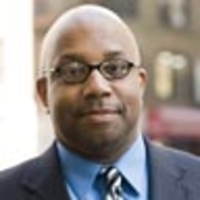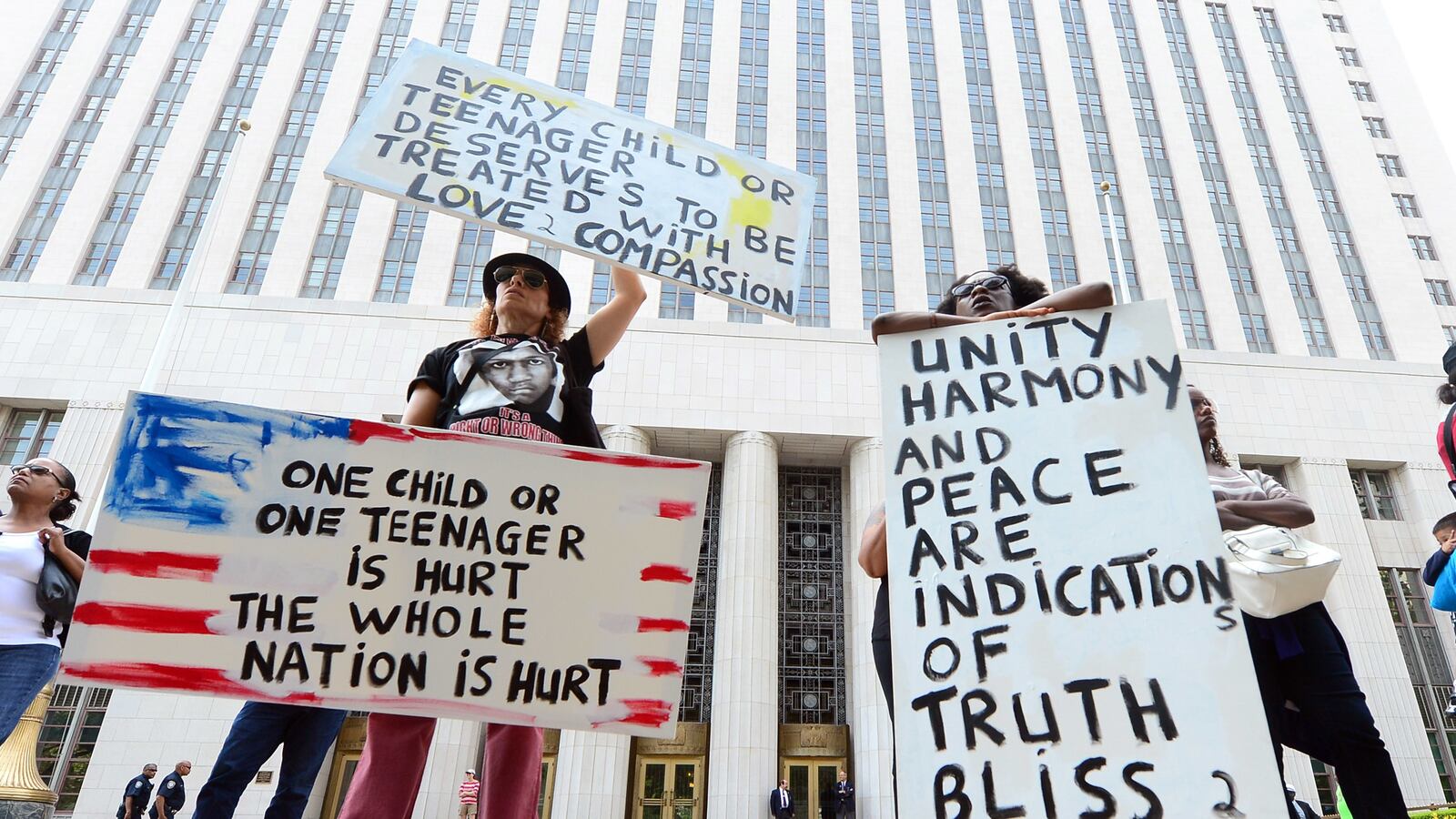President Obama’s remarkable public White House musings about the killing of Trayvon Martin are part of a larger national awakening and reassessment of the way Americans think and talk about race, crime, and culture. To a great extent, Obama is not so much leading this conversation as joining a discussion that has been building for a decade.

The weekend’s rallies provide an unambiguous clue that something beyond politics as usual is in process. Thousands of largely unaffiliated people do not show up in 100 cities on less than a week’s notice on a whim.
Another clue was the way many young people reacted to the verdict. On the night George Zimmerman was acquitted, for instance, the NAACP was kicking off its annual meeting in Orlando. Scores of younger members were distraught.
“We had to sit up with the kids until two in the morning,” an NAACP chapter president told me. “They were shocked. I mean, at a complete loss.”
As of this writing, a group of young people called the Tallahassee Dream Defenders has been locked inside the office of Florida Gov. Rick Scott for three days, demanding a special legislative session to repeal the state’s “Stand Your Ground” law. The group is inviting others to show up with blankets, pillows, and air mattresses to join them.
A number of media commentators, including Ben Ferguson, Jonah Goldberg, and Michael Goodwin, seem to have missed these dynamics altogether, leaping instead at an easy target by bashing Al Sharpton instead of asking why so many thousands responded so quickly to his calls for nonviolent protest.
Don’t be distracted by Sharpton. What’s going on runs much deeper than the latest actions of a single, well-connected civil-rights leader and media star.
As President Obama perceived—and like any national official, he possesses a fine-tuned sense of political trends that might have staying power—Trayvon’s death has become a symbol and focal point for those determined to battle racial profiling and the related, seldom-discussed American habit of treating black Americans as a criminal class that is presumptively guilty and deserving of harsh treatment by cops, courts, and the broader public.
“The fact that a lot of African-American boys are painted with a broad brush and the excuse is given, well, there are these statistics out there that show that African-American boys are more violent—using that as an excuse to then see sons treated differently causes pain,” said Obama. That rang true to activists who remember that the Sanford, Florida, police initially declined to charge Zimmerman with any offense, doing so only after 44 days of protest and a nationally circulated petition signed by more than a million people. (The town’s police chief, Bill Lee, was fired for his sluggish response to the killing.)
Obama’s comments are part of a shift in America’s longstanding history of conflating race and criminality, assigning innate criminal tendencies to black Americans (especially men and boys) and black culture.
Law professor Michelle Alexander has led the way in changing minds with The New Jim Crow, a history of how crime control became a way of reinstating many parts of American segregation. The book has become a kind of bible of the modern civil-rights movement, often cited by leaders including NAACP president Benjamin Jealous (a Rhodes scholar whose studies focused on criminology).
Khalil Gibran Muhammad, director of the Schomburg Center for Research in Black Culture in New York City, lays out a similar dynamic in his book, The Condemnation of Blackness: Race, Crime, and the Making of Modern Urban America. Muhammad painstakingly details the use of crime statistics and their interpretation—starting with the 1890 census, barely a generation after the Civil War—to portray black Americans as part of a dangerous class.
According to Muhammad, as early as 1928 a leading sociologist named Thorsten Sellin was warning that statistics reporting black criminality were slanted.
“The colored criminal does not as a rule enjoy the racial anonymity which cloaks the offenses of individuals of the white race. The press is almost certain to brand him, and the more revolting his crime proves to be the more likely it is that his race will be advertised,” wrote Sellin. “[H]is individuality is in a sense submerged, and instead of a mere thief, robber, or murderer, he becomes a representative of his race, which in its turn is made to suffer for his sins.”
That dynamic, noted in the 1920s, is at work today: thus the furor caused by columns in the Washington Post that more or less openly supported the idea that statistics provided a justification for profiling Trayvon Martin, an innocent and unarmed child made to pay the price, in part for “the sins” of some unseen, unknown stereotypical black criminal.
What might seem like a simple, uncontroversial assertion—that black boys, like all other Americans, should be treated as individuals with constitutional rights and a presumption of innocence—turns out to be a controversial position that must be argued, analyzed, and fought for with sit-ins and vigils.
In other words, we have political mobilization, backed by intellectual ferment and blessed by the president of the United States. Could be the start of something big.
Errol Louis is Political Anchor at NY1 News






